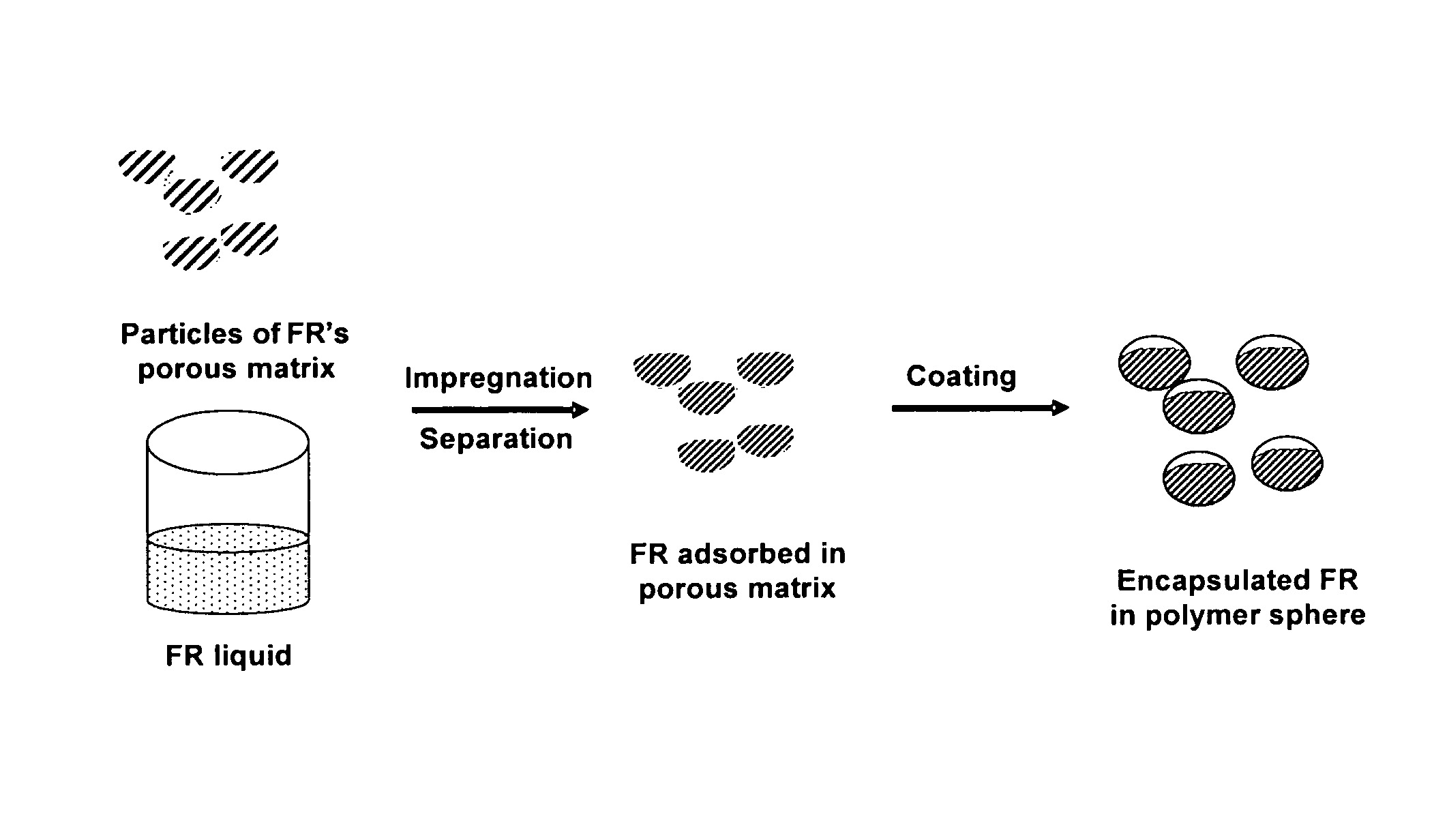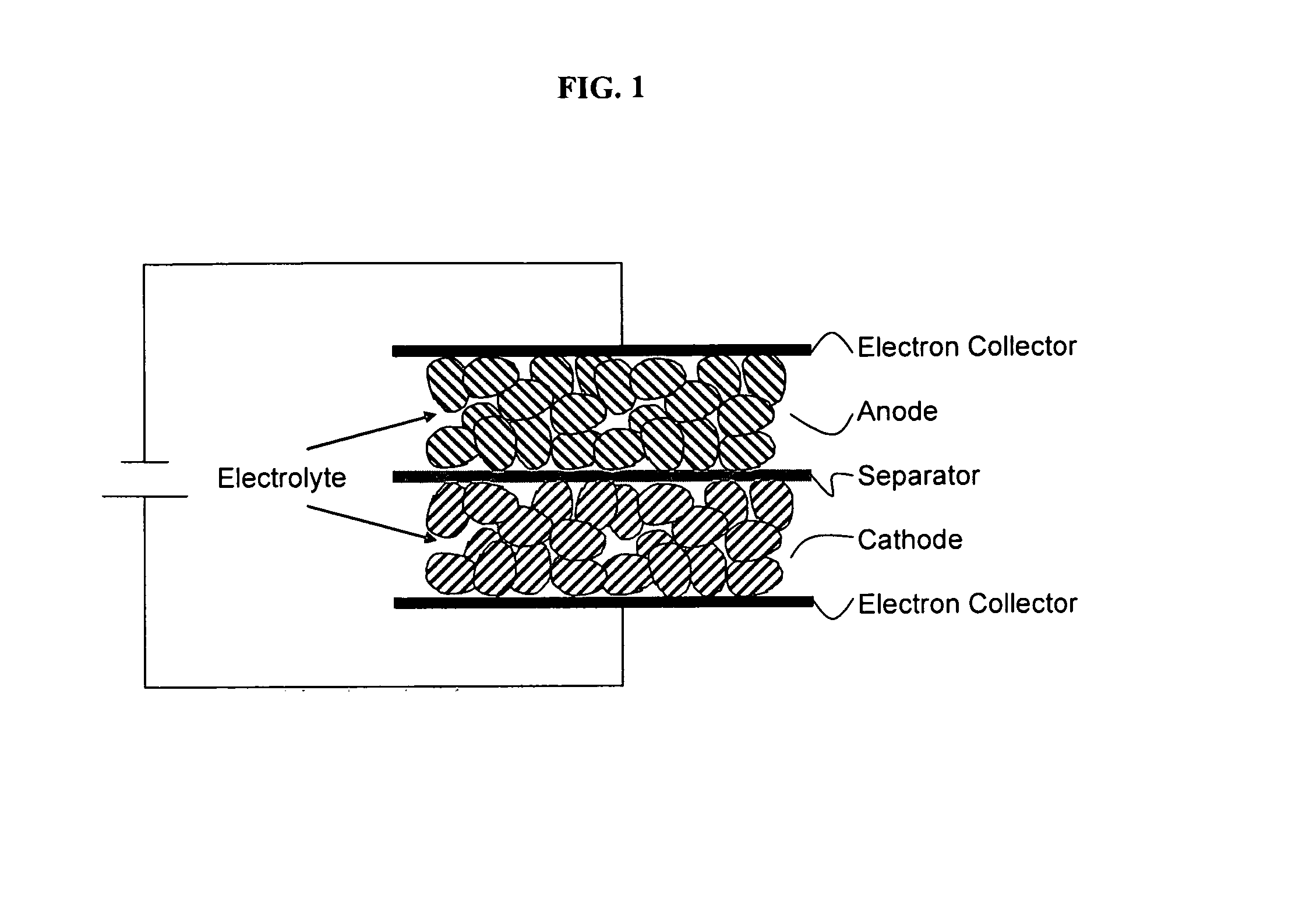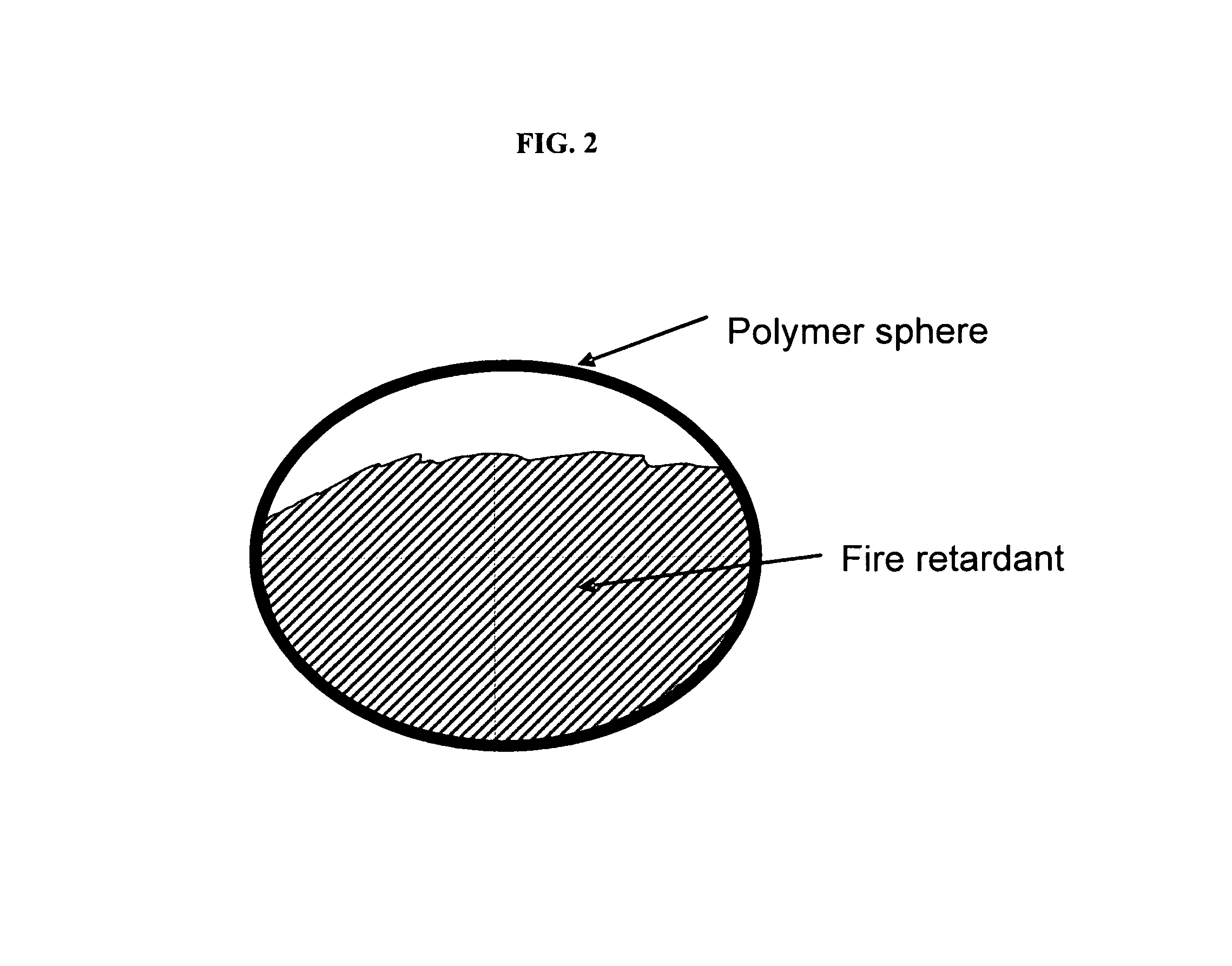Encapsulated fire-retardant materials to improve battery safety
a lithium-ion battery and fire-retardant technology, applied in the direction of secondary cells servicing/maintenance, cell components, electrochemical generators, etc., can solve the problems of low-voltage li-ion batteries, carbonate-based electrolytes are flammable, and the chain reaction can generate a large amount of heat in the battery, so as to reduce (preferably stop) the migration of lithium ions
- Summary
- Abstract
- Description
- Claims
- Application Information
AI Technical Summary
Benefits of technology
Problems solved by technology
Method used
Image
Examples
Embodiment Construction
[0049]The systems and methods of the present invention will now be described in detail by reference to various non-limiting embodiments of the invention.
[0050]Unless otherwise indicated, all numbers expressing dimensions, temperatures, and so forth used in the specification and claims are to be understood as being modified in all instances by the term “about.” Without limiting the application of the doctrine of equivalents to the scope of the claims, each numerical parameter should at least be construed in light of the number of reported significant digits and by applying ordinary rounding techniques.
[0051]Some embodiments of the present invention will now be described in more detail, including reference to the accompanying figures. The figures provide representative illustration of the invention and are not limiting in their content. It will be understood by one of ordinary skill in the art that the scope of the invention extends beyond the specific embodiments depicted. This inven...
PUM
| Property | Measurement | Unit |
|---|---|---|
| boiling point | aaaaa | aaaaa |
| temperature | aaaaa | aaaaa |
| temperature | aaaaa | aaaaa |
Abstract
Description
Claims
Application Information
 Login to View More
Login to View More - R&D
- Intellectual Property
- Life Sciences
- Materials
- Tech Scout
- Unparalleled Data Quality
- Higher Quality Content
- 60% Fewer Hallucinations
Browse by: Latest US Patents, China's latest patents, Technical Efficacy Thesaurus, Application Domain, Technology Topic, Popular Technical Reports.
© 2025 PatSnap. All rights reserved.Legal|Privacy policy|Modern Slavery Act Transparency Statement|Sitemap|About US| Contact US: help@patsnap.com



